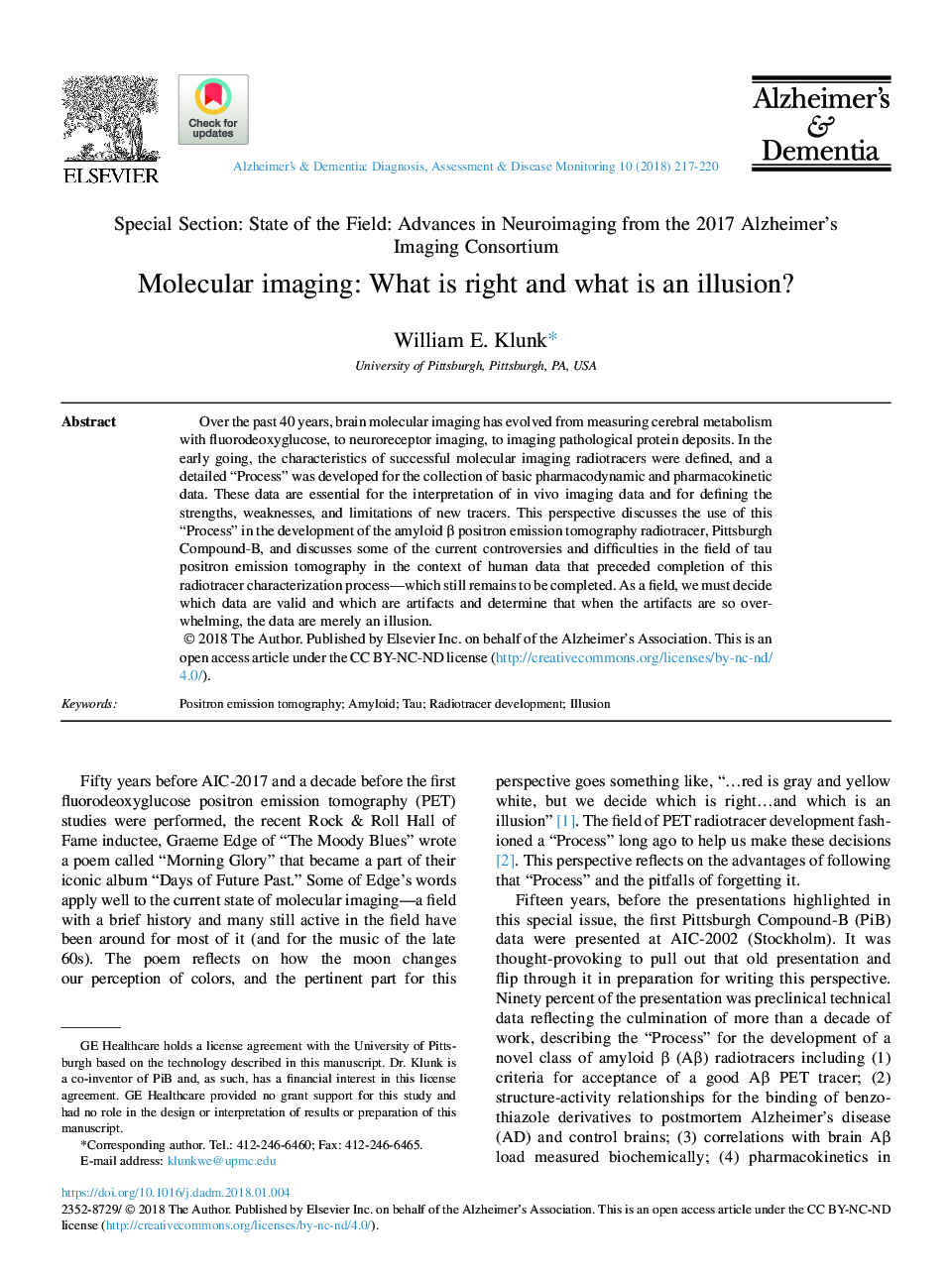| Article ID | Journal | Published Year | Pages | File Type |
|---|---|---|---|---|
| 8680268 | Alzheimer's & Dementia: Diagnosis, Assessment & Disease Monitoring | 2018 | 4 Pages |
Abstract
Over the past 40 years, brain molecular imaging has evolved from measuring cerebral metabolism with fluorodeoxyglucose, to neuroreceptor imaging, to imaging pathological protein deposits. In the early going, the characteristics of successful molecular imaging radiotracers were defined, and a detailed “Process” was developed for the collection of basic pharmacodynamic and pharmacokinetic data. These data are essential for the interpretation of in vivo imaging data and for defining the strengths, weaknesses, and limitations of new tracers. This perspective discusses the use of this “Process” in the development of the amyloid β positron emission tomography radiotracer, Pittsburgh Compound-B, and discusses some of the current controversies and difficulties in the field of tau positron emission tomography in the context of human data that preceded completion of this radiotracer characterization process-which still remains to be completed. As a field, we must decide which data are valid and which are artifacts and determine that when the artifacts are so overwhelming, the data are merely an illusion.
Related Topics
Life Sciences
Neuroscience
Neurology
Authors
William E. Klunk,
